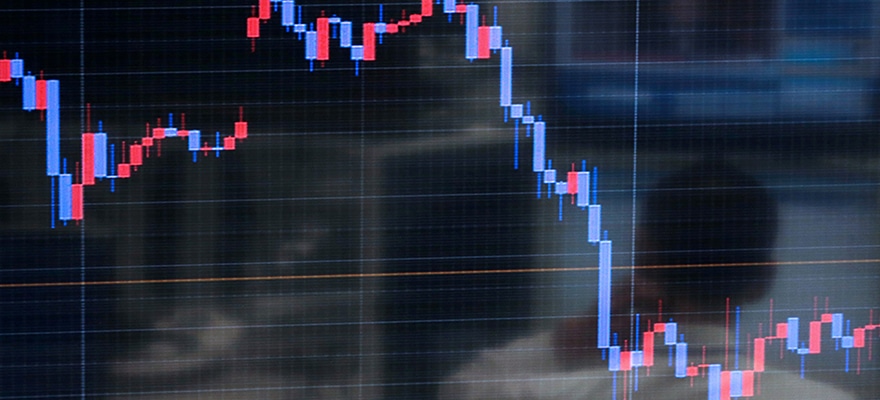I recently spoke with Drew Niv, CEO of FXCM Inc, the first publicly traded US Forex broker (NYSE:FXCM). I had a chance to ask him about FXCM's latest product: the Dow Jones FXCM Dollar index. We appreciate his comments and thank him for his time.
What was the purpose behind creating the Dow Jones FXCM Dollar Index?
The most important reason is there are a lot of customers that have an opinion about the dollar. They think the dollar is going down or they think the dollar is going up. But they don’t really know how to take advantage of it. Do I do buy the euro against it? But I’m hearing bad news about the euro. So, it’s very confusing for a lot of people. If you think the dollar is going down then you just short the index. If the dollar is going up, you just buy the index. You don’t care about which specific currency pair is good or not good.
So does this mean that you’re looking to attract a different kind of trader or investor with this product?
No. It’s the exact same customer. It just literally gives them an easier way to affect their opinion. I would say the other reason for having an index is to make it less volatile than each of the underlying currencies as it is made up of four currencies. We know that the less volatile the currency pair, the more likely the customer is to be profitable.
What were some of the reasons behind co-branding this product with the Dow Jones?
The Dow Jones Industrial Average is pretty much the most powerful brand in the equities world. We wanted to bring to people, if you will, the benefit that this is not some arbitrary decision by FXCM - how the index is made up and when it will change. This is a very official product that is going to be eventually licensed and used, not just by FXCM, but by any other interested party. We’re hoping exchanges and other people will adopt it as well.
That actually brings up my next question. I know you are offering this product to your retail clients, but are you also looking to offer this product and provide Liquidity to other brokers as a B2B offer?
On a conceptual level, yes. It’s just going to be that those people are going to have to make their own decision if they want to adopt it or not. It will be available right now to FXCM clients and to white label partners. Other interested parties can choose whether to adopt this or not and will have to pay fees to Dow Jones for that.
How does this product compare with the ICE US Dollar Index?
If you look at how this is comparable against the ICE US Dollar Index there are two things: One is the ICE index was made in 1970’s. It’s a basket of currencies against the dollar and is more appropriate for what was liquid in 1970’s, not what is liquid today. Because you had all these other currencies merging to the euro, the euro now makes up 57 percent of the ICE index. The ICE dollar index essentially is a souped-up euro and is too heavily affected by it. I may as well trade the euro. It has a higher spread than the euro because it’s got other esoteric currency pairs in there that are wider spread currencies.
The Dow Jones FXCM Dollar Index at inception was in four equally balanced weighting, so it’s 25 percent each. One currency does not move the index. This creates a more balanced and therefore less volatile approach. The other thing about it was that it’s more accurately reflective of the four tightest currency pairs there are. So it’s the Euro, Sterling, Dollar, Yen and Aussie Dollar. This gives the customer very much a trading oriented index, which has the tightest spread currencies.
The ICE Index doesn’t meet any of the conditions for us. The ICE Dollar Index is just an indication of where the dollar is going against the euro, not where the dollar is going in general. Ours is much more balanced. It has an Asian component and a European component, not just an overly European component. In the seventies Europe was far, far larger than Asia. Today, that’s not the case. Today, there is much more equal balance in the world. In terms of trading partners with the United States, in terms of capital flow in the world, Asia and Europe are more balanced when it comes to the dollar. We couldn’t include emerging markets in there, because you can’t put the Chinese currency and some others yet. We have Australia and Japan, and we balanced that against Europe and the UK.
You mentioned earlier about emerging markets. The Brazilian Real is available with Saxo. The Chinese Yuan and the Indian Rupee are available with Oanda. How is FXCM positioning itself to give clients a piece of the emerging economies?
What we offer today are only the currencies that are legally available for speculation in the spot market. On our platform you can trade the Mexican Peso, South African Rand, Russian Ruble, Hungarian Forint, Czech Koruna and Turkish Lira. There are very few others that are legally available for speculation. The Chinese Renminbi and the Indian Rupee are not one of them.
Since we have physical presence all over the world, we are limited to what we can offer.
The Dow Jones FXCM Dollar Index has been added to demo accounts. When can your live clients expect to see it in their accounts?
We’re hoping in a month or two, we’ll turn it on live accounts.
Any plans to make it available on other platforms such as the Metatrader 4 or Forex System Selector?
It will probably make its way to those platforms in the summer, as well.
Most of FXCM’s products are offered on a Non Dealing Desk Model. Is the dollar index offered on a dealing desk or a non dealing desk model?
Technical reconciliation issues make it harder to offer the index as a non dealing desk product, initially. It’s going to be offered as a dealing desk product for the first few months. We’re hoping that by the fall we’ll transition this to a non dealing desk. When a trade happens in our system it is essentially two trades. There is a customer trading with us and there is a trade that we place correspondingly with the bank. When somebody buys AUD/USD on the platform, we buy AUD/USD with the bank. Now with this index, the customer is buying an index basket with us and there is no corresponding index basket at the bank. You have to buy the currencies and get the mechanism to reconcile. Getting these four currency trades reconciled to one customer trade is what we’re working on. As soon as we have that worked out, it will be a non-dealing desk product.
Around 2008 – 2009, you also launched the short/long Japanese Yen and US Dollar funds. How is this different from those funds?
Well those were managed accounts of sorts. You had to put your money in a managed account and you could not trade it. This is a trading instrument just like any other currency. It’s just a basket of currencies. Instead of trading one currency, you’re trading four, all at once. You can use the same leverage, depending on which entity you are in. If you’re in the US you can use 50:1. In the UK you can use 100:1.If you look at our clients, our clients don’t want managed funds. Our clients want a trading product and this is a trading product, which will have a price 24 hours a day. You can get in and out of it every second, if you so choose.
I asked Drew some general questions on topics that were of importance to our readers:
How does FXCM calculate volume on a given product? When a trader, let’s say opens and closes a one million trade, do you report that as a 1 million or 2 million volume transaction?
It’s 2 million. The standard in the interbank market is a per side standard. So like institutional trades—the bank you use for trading may not even be the bank you have the money with. Because it will be just an executing bank and you have your money with a different prime broker, every side counts. The round trip thing is really a retail mechanism. When we release our own statistics it’s on a per side basis. Now we only count the customer trade. We don’t count the bank trade. So it’s only when a client places 1 million and then closes on the 1 million that’s a 2 million trade. We don’t count the offsetting trades with the bank. Otherwise we can literally double the volume. We don’t do that and then we don’t count any of the overnight rolls in trading volume.
On Monday, when we release our trading statistics with earnings, we’re going to be for the first time releasing the FXCM PRO trading statistics separately. So up to now we have just released the FXCM retail business statistics. We’ve never released the FXCM PRO statistics.
The other thing is certain white label statistics, for example DBFX, were not in the trading statistics. Not everything done on the FXCM platform is in our statistics. It’s always going to be left out. The white labels that have their own bank lines, their own staff and just use our platform—where it’s just a technology deal, we don’t include those. Those are not trades that were rerouted to our back end. Certainly it was routed to somebody else’s backend, even though they were using our technology. We have a number of those arrangements in Japan and all over the world where we are just the technology provider.
The Canadian government is going to require firms trading OTC forex contracts with Canadian residents to be registered with the Investment Industry Regulatory Organization of Canada (IIROC). At the moment FXCM is not registered with the IIROC. What is FXCM’s position with Canadian clients?
We will be transferring Canadian clients to our white label partnership with Friedberg Mercantile Group. We did a joint venture with them. Their DBA is going to be FXCM Canada and we’re going to be using their license. We’ll be aggressively going after Canadian clients. We have not advertised in Canada in many years, but we will be after this.

















